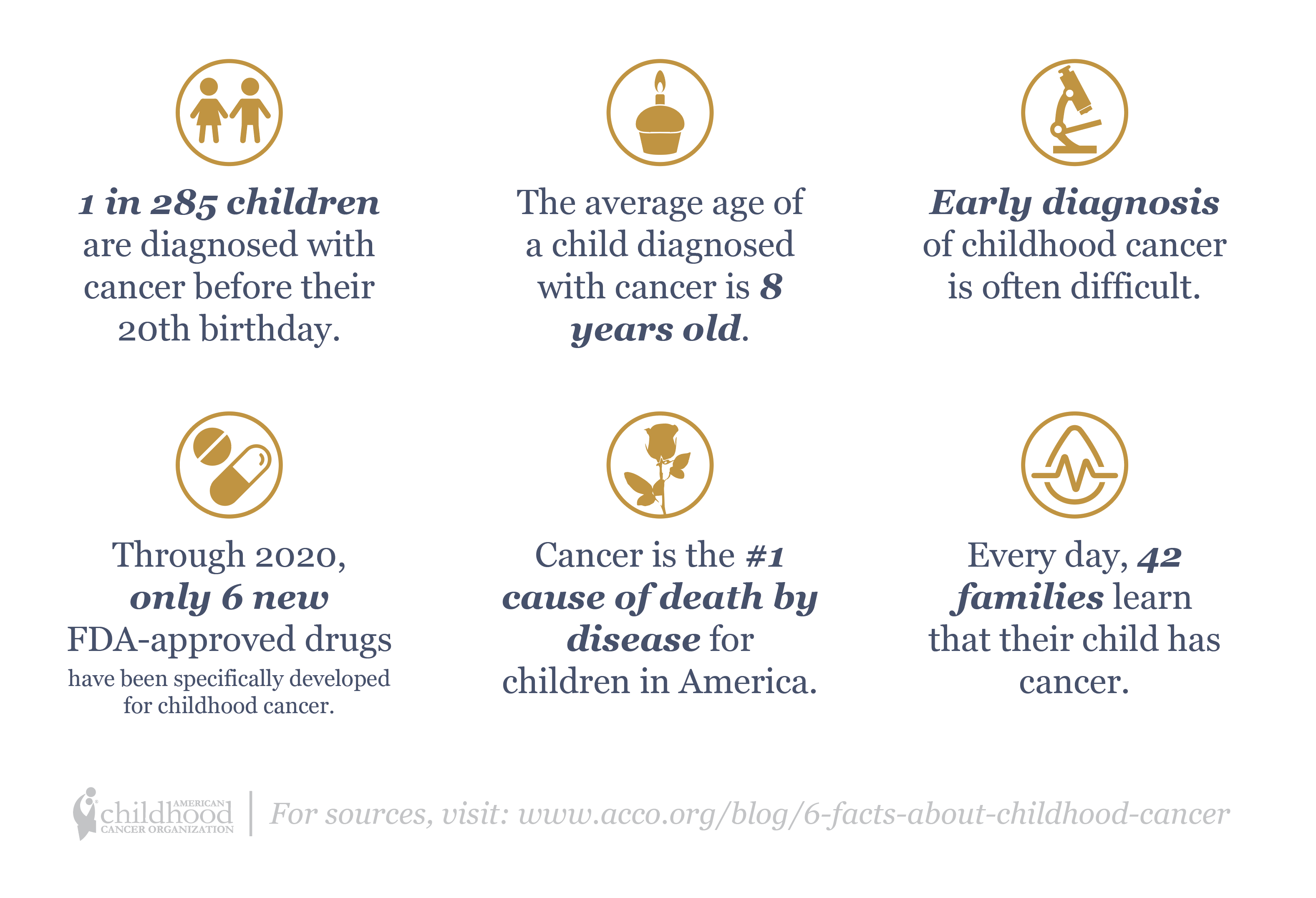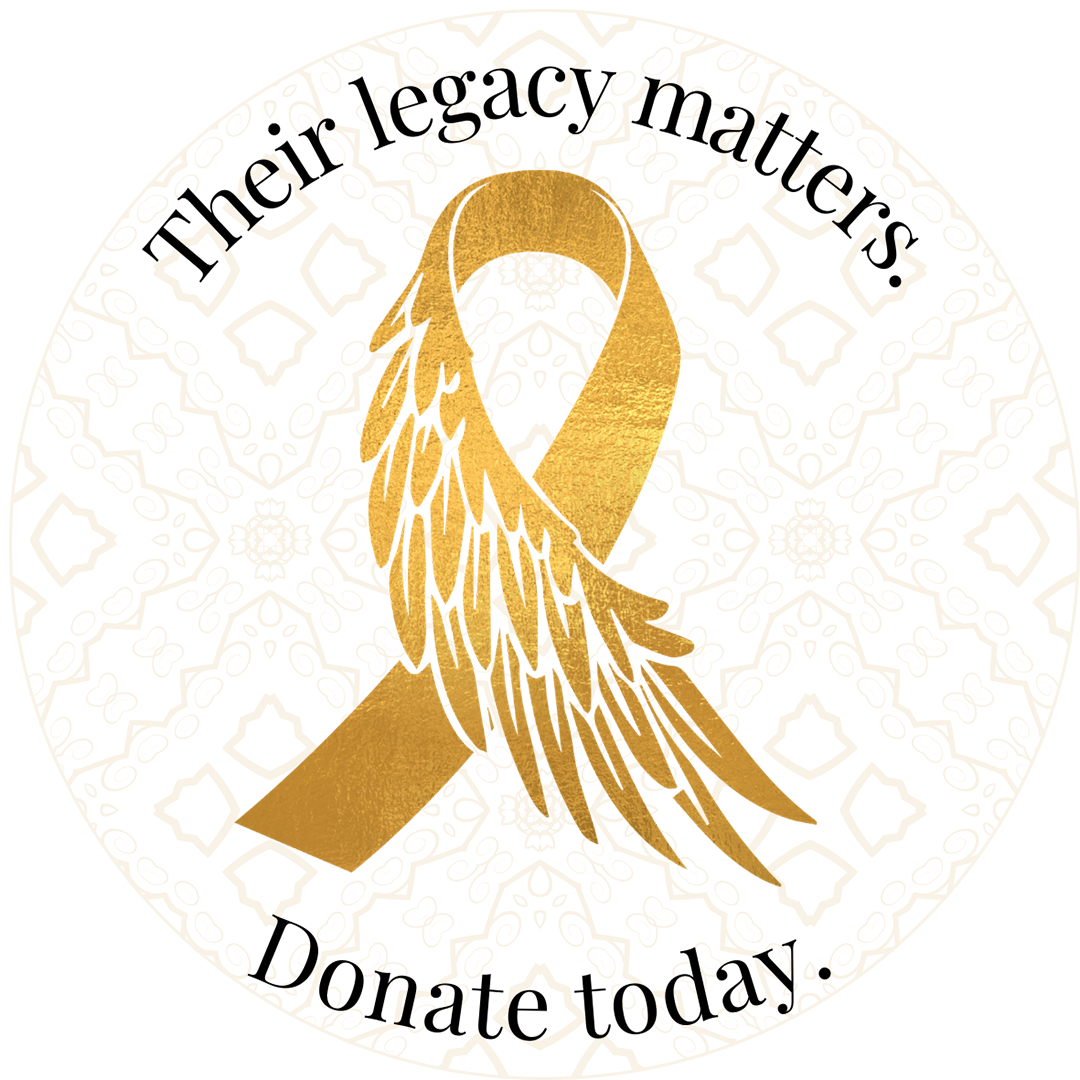
Here are 6 facts you may not know about childhood cancer.
Approximately 1 in 285 children in the U.S. will be diagnosed with cancer before their 20th birthday.
Picture your old elementary school. In all likelihood, at least one of your fellow students was diagnosed with cancer before they could reach their second decade of life. The average student population of an elementary school in America is 473, meaning that most elementary schools are attended by at least one child who has — or will soon have — cancer.
The average age of a child diagnosed with cancer is 8.
Think about the 8-year-olds you know. What are they doing? They are going to school and developing a love for reading. They are playing with friends and going to birthday parties. No 8-year-old — or child of any age — should be sleeping in the hospital, taking medicine that often makes them feel worse, and wondering if they’ll get to celebrate another birthday. Yet that is the grim reality for children fighting childhood cancer.
Early diagnosis of cancer in children is often difficult.
Unlike many types of adult cancers, there are no recommended screenings for childhood cancer to catch it early. Most children are diagnosed with childhood cancer only after the appearance of symptoms. Unfortunately, this means that most children are diagnosed after the disease has spread, making it more difficult to treat and requiring more intensive — and therefore more toxic — treatments.
Through 2020, only six new drugs have been approved by the FDA that were specifically developed for childhood cancer.
In the words of ACCO CEO Ruth Hoffman: “It is mind-boggling and disturbing to know that a child diagnosed with AML [acute myelogenous leukemia] today will be treated pretty much the same way that my daughter was in 1987.” If outcomes for children with cancer are to continue to improve, and if we want childhood cancer survivors to live without a lifetime of health problems, it is critical that we push relentlessly for new and less toxic treatment options specifically for childhood cancer.
Cancer remains the #1 cause of death by disease for children in America.
Treatments have advanced and mortality rates have decreased, so it may surprise you to hear that cancer is still killing more children in America than any other disease. Some cancers are still functionally incurable, despite all our advances. Even with a more “curable” diagnosis, too many children in the United States don’t have access to the medical care they need. Without treatment, cancer is the same death sentence that it was before modern medicine.
Every day in the United States, 42 families hear the words “Your child has cancer.”
In all likelihood, there is a child in your community fighting cancer right now. In 2021, it was estimated that 15,590 children and adolescents ages 0 to 19 would be diagnosed with cancer and 1,780 would die of the disease in the United States. Picture those numbers as grieving parents, siblings who don’t understand what’s happening, children who can’t visit their friend in the hospital. Picture those numbers as empty chairs in classrooms.
You can change these numbers!
The American Childhood Cancer Organization relies on the generosity of people like you. With your donation, we can support more families, fund more research, and advocate for children with cancer across the nation and across the globe. Click here to donate today.
—–
Updated on March 4, 2022 by American Childhood Cancer Organization.
Sources:
1. American Society of Clinical Oncology, National Center for Education Statistics
2. SEER Cancer Statistics Review
3. (No citation needed.)
4. National Cancer Institute
5. Center for Disease Control
6. National Cancer Institute



